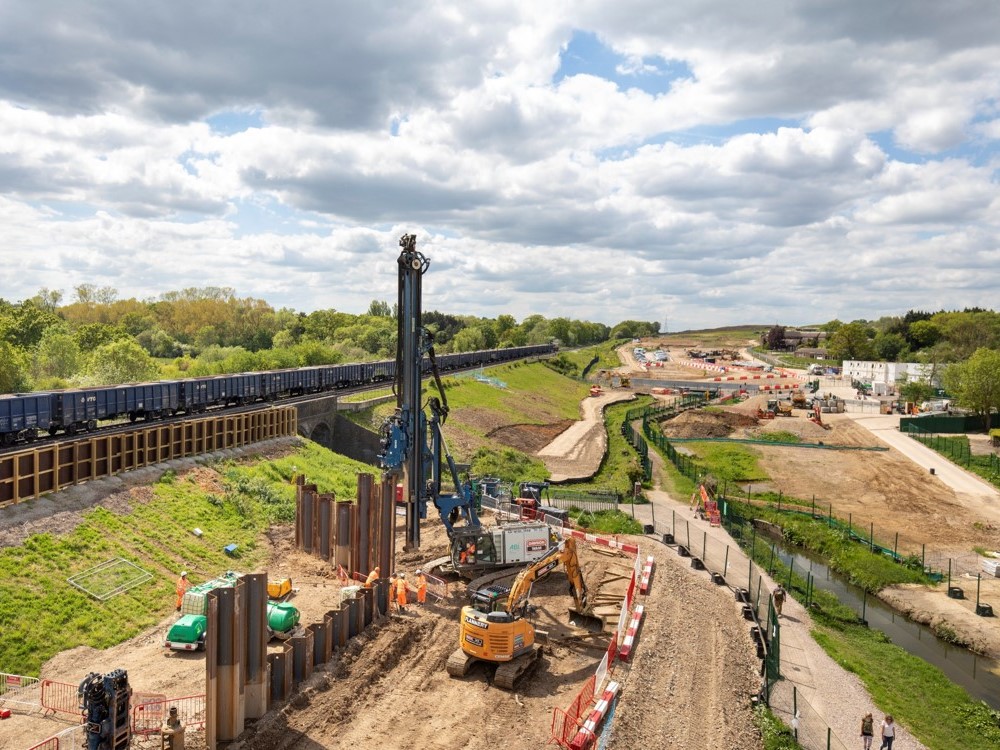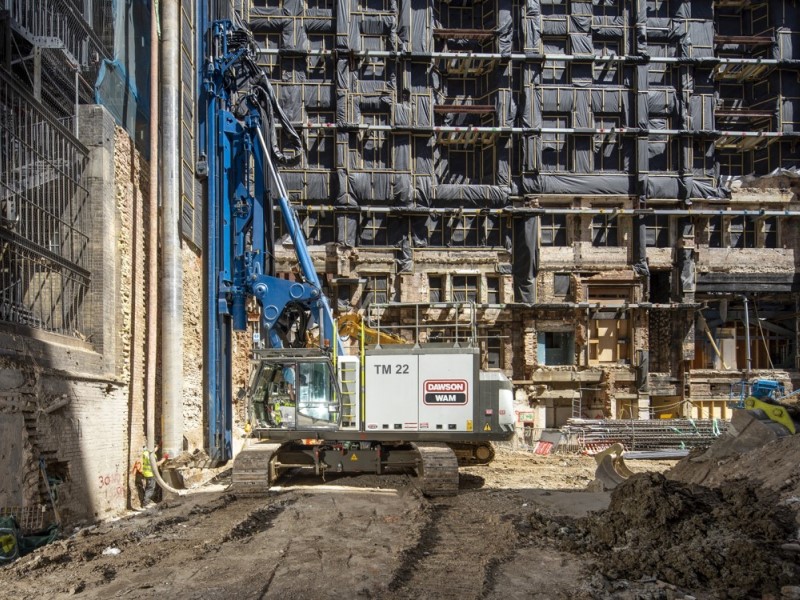Belfast: Ormeau Avenue Hydraulic Upgrade
PROJECT DETAILS
CLIENT:
Northern Ireland Water
DESIGN ENGINEER:
White Young Green (WYG)
MAIN CONTRACTOR:
Dawson WAM Ltd
LOCATION:
South Central Belfast
Dawson WAM were awarded the construction contract in December 2017 by client Northern Ireland Water. The contract works involved the installation of a variety of combined, storm and foul sewers, ranging in diameter from 150mm to 2100mm, in a busy, densely populated urban environment, as well as design and build of the new wastewater pumping station. The scope included:
• A new wastewater pumping station to pump to an existing combined trunk sewer at Cromac Street.
• 63,3000m2 of storm separation.
• Upsizing critical combined sewers.
• Upgrade of 2 No. CSOs.
• Closure of 3 No. CSOs.
• Storm sewers to serve new residential/commercial developments.
Certain elements of the project proved extremely challenging, none less so than the installation of a 1200mm diameter combined sewer across Great Victoria Street and 1200mm diameter combined and 1200mm diameter overflow sewers across the Dublin Road. DFI Roads would not permit closure of these two arterial routes, which are key to the functionality of traffic movements in the city centre. Dawson WAM explored various trenchless options for these pipe installations in collaboration with the project manager and NI Water.
The technique of pipe jacking, using an open-face excavation shield at the head of each drive, was chosen as it provided the capability to manually access and remove any unidentified underground obstructions encountered. The technique proved invaluable where tunnel drives encountered historic timber piles, which were easily removed. Other methods which were considered included backhoe tunnelling and microtunnelling, however these would not have provided access for the removal of difficult obstructions and would risk costly and extremely disruptive recovery of tunnelling equipment and completion by traditional open-cut methods.
Sheet piled temporary cofferdams were essential for the safe installation of the deeper open-cut sewers, along with launch pits for the trenchless works. Sheet piles are not always suited to an urban environment, due to vibration and noise produced during their installation. However, Dawson WAM, through their extensive experience and access to their modern piling fleet, were able to assess the risks by driving test piles in various ground conditions and analysing vibration and noise outputs, and were able to confirm their suitability. For example, assessment proved that the installation of piles through ‘Belfast Sleech’ would be within acceptable limits. In some of the stiffer boulder clays the ground required pre-augering, which enabled Dawson WAM to deploy the quick coupling double drive cased auger system of the leader rig to quickly alternate between pre-augering and sheet pile installation which saved valuable time on the project.
As the local sewerage network suffered a long history of extensive Fats, Oils and Grease (FOG) and ‘fatberg’ problems, NI Water’s operations team requested a non-stick solution for the new wastewater pumping station walls, with the aim of reducing the accumulation of FOG, reducing the maintenance burden and promoting efficient operation. Construction using segmental shaft sections would not have provided the uniform, joint free, surface required for the successful application of the proprietary non-stick coating products. Dawson WAM therefore developed a circular secant piled cofferdam design which, coupled with an internal single shutter formwork created a smooth, robust reinforced concrete lining. This proved a successful design solution, with the lining providing a smooth finished internal concrete surface for the application of ‘Sika Poxitar F’, the non-stick product recommended by Dawson WAM and accepted by NI Water.
Where possible, Dawson WAM opted to use precast concrete construction for CSO upgrades. This technique provided the benefits of reduced construction time, and associated disruption when compared to traditional in situ reinforced, in addition to the safety benefits associated with reduced site-traffic movements and quality control afforded by off-site manufacture. Despite the strenuous efforts during the ECI phase to mitigate construction risks, approximately 75% of all underground services encountered were uncharted. These were a mixture of cables, gas mains and water pipes which were reported to relevant authorities for future reference. Unforeseen circumstances often lead to changes to the construction programme and the critical path, therefore previously agreed traffic constraints and traffic management plans were regularly reviewed in collaboration with all stakeholders to ensure maximum production and minimum disruption. Additionally, during the installation of the new sewer network a significant number of undocumented foul and storm sewer misconnections were uncovered. NI Water seized the opportunity to resolve all these misconnections as construction progressed, and deliver further significant environmental benefits.
Following the construction of the new Combined Sewer Overflow (CSO) structures, it was necessary to install new overflow pipe networks which would ultimately prevent flooding within the catchment areas and relieve the pressure on the existing sewer network. To reduce the environmental impact on the Blackstaff River, the project utilised the Belfast Tunnel as the point of discharge for these overflow sewers. This would then allow the sewerage to flow via gravity to the Terminal Pumping Station in Duncrue Waste Water Treatment Works, where it would then be discharged into the treatment works and treated accordingly. The installation of these overflows within the Belfast tunnel access shafts proved to be extensive tasks in regards to health and safety and engineering.
Access Shaft 6 (6m diameter, 15.5m deep) within Little Charlotte Street Car Park adjacent to Bruce Street availed of a new 1200mm overflow sewer from the CSO installed at the new Hardcastle Street Pumping Station. Access shaft 8 (10m diameter, 26m deep) within Cromac Square Car Park availed of a new 900mm diameter overflow sewer from the newly installed CSO within Cromac Square.
Throughout the project, Dawson WAM provided Public Relations services to businesses and private properties adjacent to the works. The key aim was to keep all parties informed and aware of the progression of the construction process, in addition to liasing with the parties to minimise disruption to their day to day life. Dawson WAM employed various Building Information Modelling (BIM) tools such as SketchUp to illustrate and plan numerous areas and phases of work which helped the general public to understand the nature of the work being carried out.



